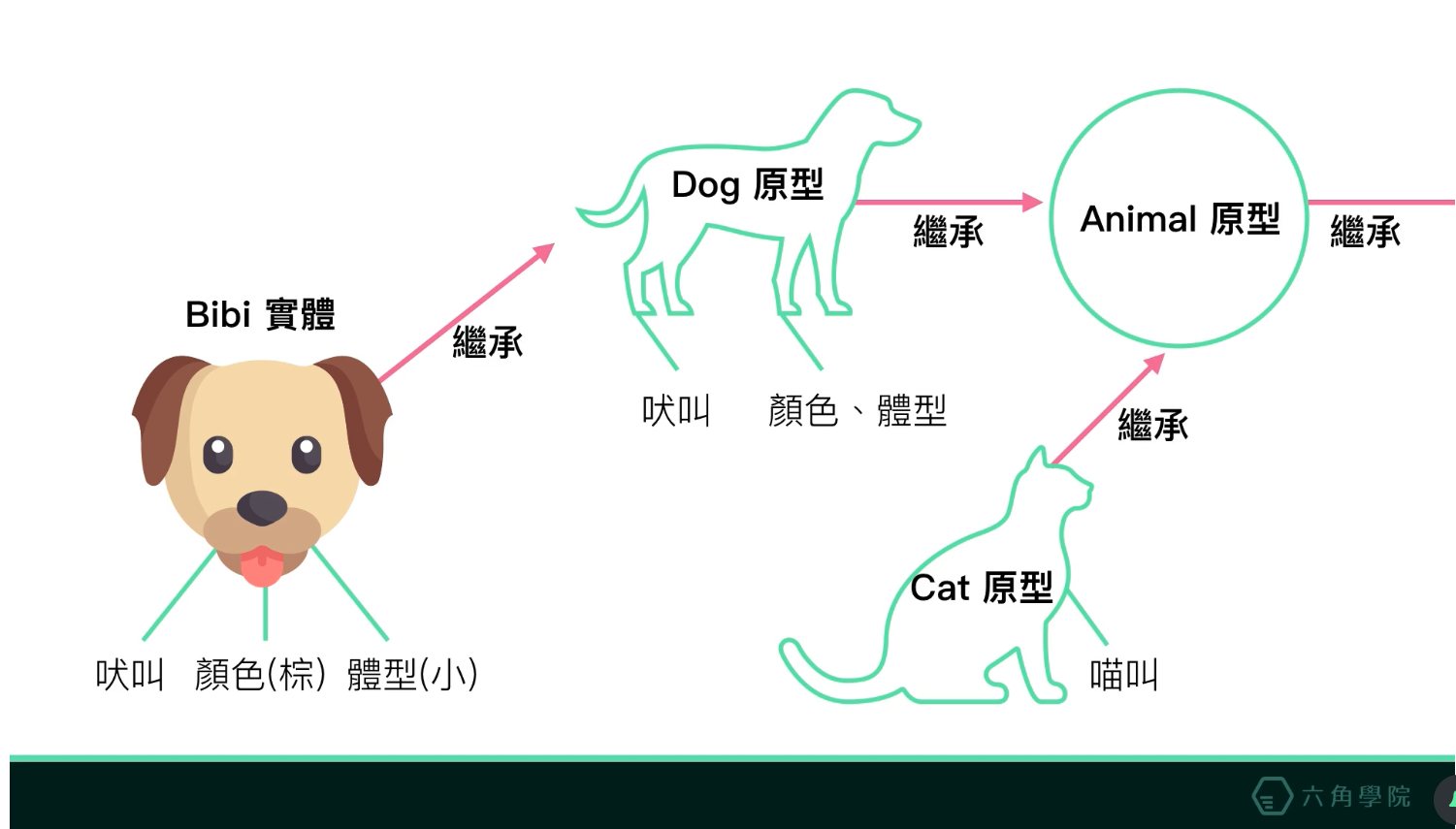整理這些技術筆記真的很花時間,如果你願意 關閉 Adblock 支持我,我會把這份感謝轉換成更多「踩坑轉避坑」的內容給你!ヽ(・∀・)ノ
JavaScript 核心觀念(52)- 繼承與原型鍊 - 原型鏈、建構函式整體結構概念
前言
接下來這一篇將會介紹整體原型鍊的觀念,因此可以說是類似回顧觀念並複習。
原型鏈、建構函式整體結構概念
在前面有講到相當多原型的觀念,也練習了如何建立自己的原型
1 | |
在此我們知道 bibi 繼承於 Dog 的原型,而狗又繼承於 Animal 的原型,透過這個原型鍊的概念,我們可以透過 Animal 延伸出相當多東西,例如:貓的原型、鳥的原型以及昆蟲的原型等等。

前面我們了解到,原型都有向上查找的特性,而這個特性我們稱之為原型鍊
舉例來講 bibi (var bibi = new Dog('bibi', '棕色', '小');) 的原型再向上查找時,我們透過 __proto__ 查找會找到 Dog.prototype,而 Dog 的原型是怎麼建立的呢?主要是透過 Dog 的建構函式,而這一個建構函式也會指向 constructor 也就是下方這一段所建立
1 | |
接下來 Dog 的原型還可以向上查找找到 Animal.prototype,並且與前面相同,Animal 的原型是基於 Animal 的建構函式所建立
1 | |
接下來如果再依照 Animal.prototype 則會找到 Object.prototype,當然也會指向相對應的 Object 建構函式,因此這邊有一個重點「**每一個原型,都有屬於它自己的建構函式,也就是 constructor**」,但是這邊要注意到一件事情,當如果你在 Object 時,再繼續向上查找則只會找到 null 這個原始型別

在上圖我們有看到 Dog、Animal 以及 Object,而這邊建構函式我們都可以建立原型的方法
1 | |
那麼為什麼可以建立呢?原因在於 Dog.prototype 都是繼承於 Function 的原型

想當然 Function 也有屬於它自己的建構函式,而如果在 Function 向上查找時,則會找到 Object 的原型

上面講了很多,但實際上沒有驗證是很難理解,因此這邊將會使用以下程式碼來驗證
1 | |
首先我們在一開始的 bibi (實體) 時有說到,當它向上查找會找到 Dog 的原型
1 | |
這邊要注意請不要輸入 bibi.__proto__ === Dog; 這樣除了結果會是 false 之外,最主要原因是,你是指向到這個函式,而不是狗的原型
那麼接下來我們還可以向上查找
1 | |
而目前 bibi 已經向上爬了兩層,因此你可以將第一層 bibi.__proto__ 看成 Dog.prototype.__proto__ === Animal.prototype // true,而這邊我們也可以驗證繼承來的 constructor 是否就等於 Animal 的 constructor
1 | |
最後我們再來驗證如果再持續向上查找原型會找到 null 的原始型別這個觀念
1 | |
而這邊函式的部分就不再次說明,直接提供程式碼看結果
1 | |
因此函式可以使用 prototype 都是來是 Function 的原型
最後的最後 Function 本身也是繼承於物件
1 | |
參考文獻
整理這些技術筆記真的很花時間,如果你願意 關閉 Adblock 支持我,我會把這份感謝轉換成更多「踩坑轉避坑」的內容給你!ヽ(・∀・)ノ


